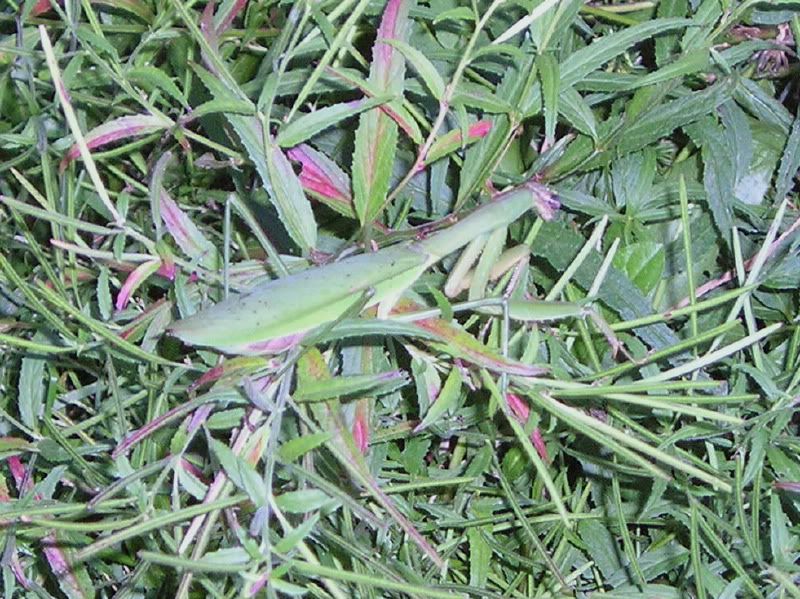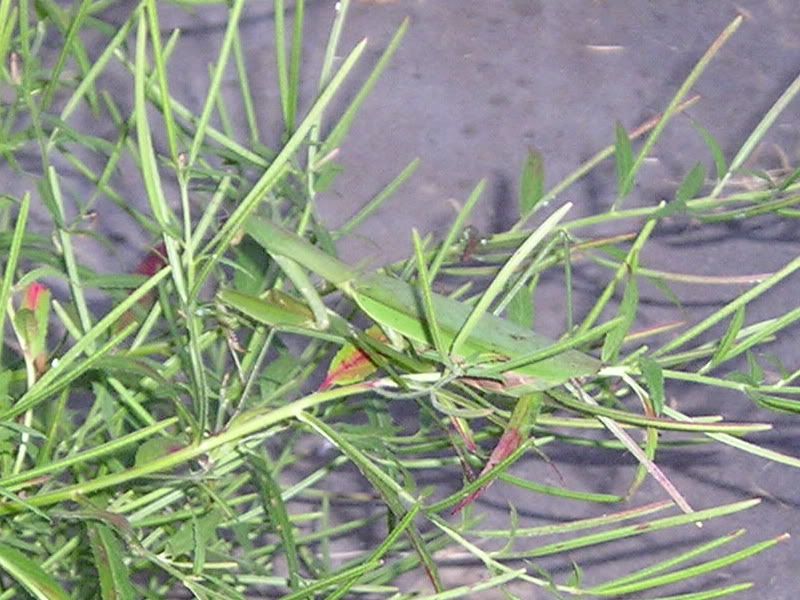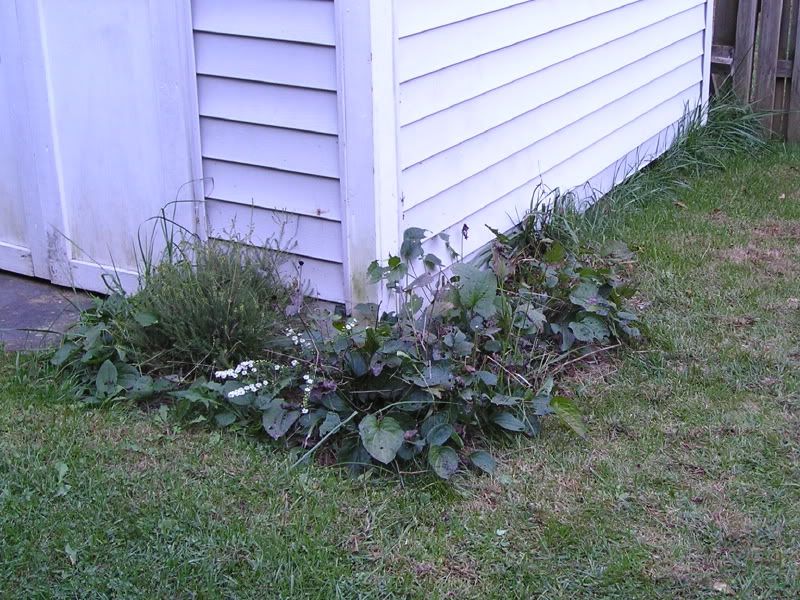
I had first sighted her (I'm assuming it's a her at this point in the season) at the end of August when I first moved in. I was putting stuff in the shed and noticed a paper wasp nest on the door. So, I got out the trusty bug spray and doused the nest. Immediately, she sprung out of the weed she was sitting in. At that point, I resolved to find a less toxic way to discourage wasps. I want praying mantises. Well, except the ones that eat humming birds, I want to encourage humming birds. ;)
I am very excited to find that she is still in my garden, despite that brush with bug spray. I put her on one of the weeds that I decided to let until it died back. Then I went inside for the camera and took pictures. She wasn't fond of the flash. I can't say I blame her.

I finished chopping down the flower stalks. And did some other trimming. And went inside. Only to be struck by the concern about her eggs. What if I had cut down those flower stalks and her egg case was in them. Horrors, I might have destroyed next year's praying mantis!
Fortunately, Google came to my aid. I found several pictures like the one in this ad and on this information site and towards the bottom of this one. Thankfully, I hadn't seen anything like this when I was cutting down those flower stalks. Praying mantises do lay their eggs in cases usually on flower stalks or branches or even on the sides of buildings. But they are brown, course looking nugget. I might mistake it for some of that wood chip mulch that's in the beds, but I didn't see anything like that on those flower stalks. Whew.
Oh, and that garden looks a lot better now that those flower stalks are down. Something was eating the leaves and it looked a fright. And there is some kind of ground cover so the garden isn't bare.
